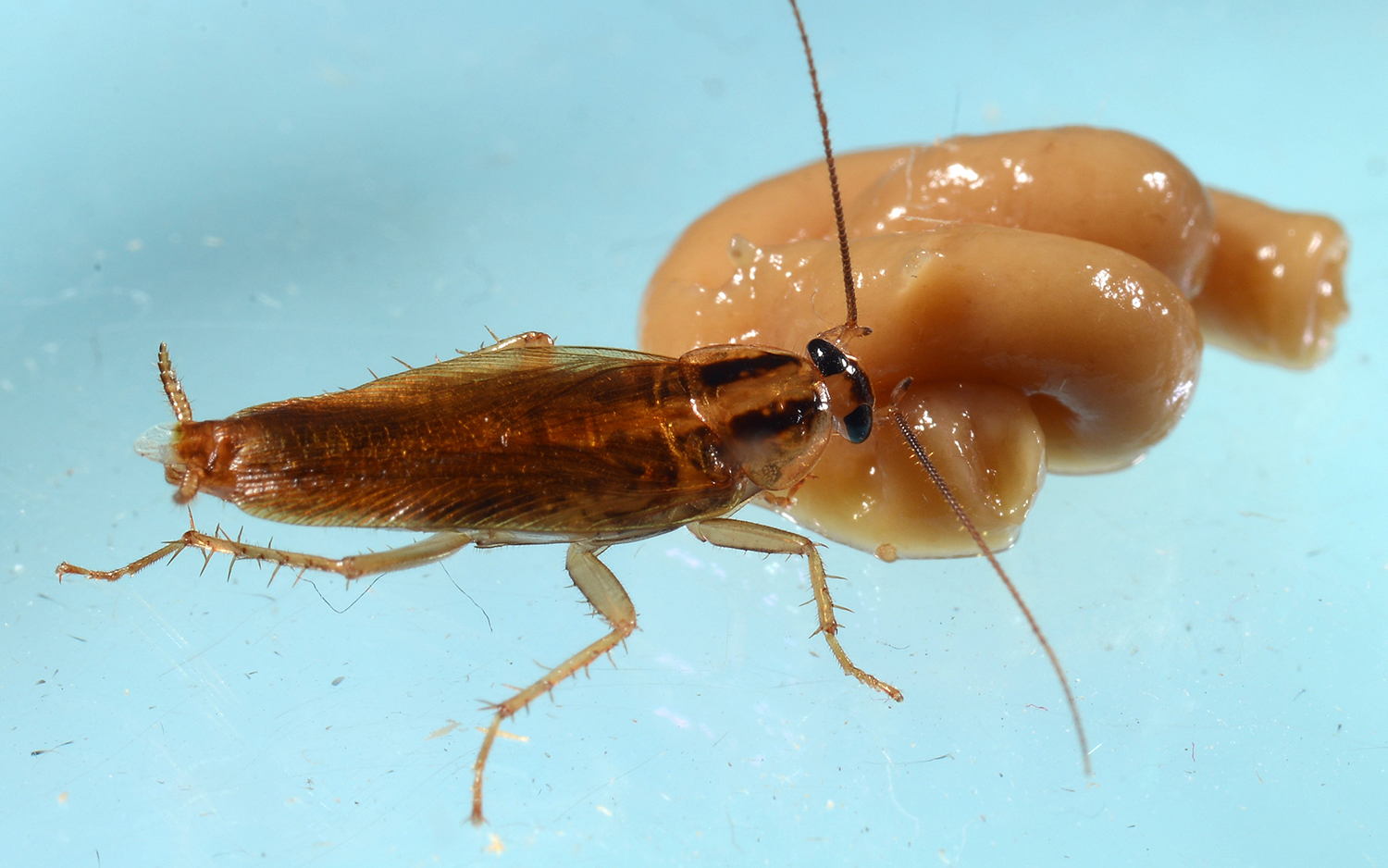Cockroach 'Superbugs' Becoming Near-Impossible to Kill
German cockroaches — small, swift, prolific insects that live only around people — are quickly evolving resistance to a range of pesticides at the same time and may soon be nearly impossible to kill with chemicals alone.
Exterminators typically rely on different classes of toxic chemicals to eliminate roaches; if the insects happen to be resistant to one class, they'll usually succumb to another. However, researchers recently discovered that German roaches (Blattella germanica) are developing cross-resistance to a range of insecticides, which means that the roaches' offspring are born already impervious to toxins that they haven't directly encountered.
And this sometimes takes place within a single generation, the scientists reported in a new study. [Photos: 15 Insects and Spiders That May Share Your Home]
"We didn’t have a clue that something like that could happen this fast," said study co-author Michael Scharf, a professor and chair with the Department of Entomology at Purdue University in Indiana.
"Cockroaches developing resistance to multiple classes of insecticides at once will make controlling these pests almost impossible with chemicals alone." Scharf said in a statement.
For the study, the researchers tested the effects of three different courses of insecticides on roach populations in apartment buildings in Danville, Illinois, and in Indianapolis, Indiana, over six months. They exposed one group of roaches to a single insecticide. A second roach population received two insecticides from different classes. And a third was dosed with rotations of three insecticides — one per month, for two three-month cycles.
The scientists also tracked roaches' resistance to insecticides across multiple generations, trapping live roaches to take back to the lab in greased baby food jars baited with beer-soaked bread.
Sign up for the Live Science daily newsletter now
Get the world’s most fascinating discoveries delivered straight to your inbox.
In most cases, roach populations either remained stable or increased, and rotating pesticides was found to be "mostly ineffective" at reducing their numbers, "due to cross-resistance," the study authors reported. Offspring were not only resistant to the pesticide that their parents encountered but also unexpectedly showed signs of resistance to other classes of insecticides as well, according to the study.
The only experiment that worked at all was the single pesticide; it was highly successful in a population that happened to have almost no resistance to the toxin. However, in another experiment the researchers tested a group of insects that had slightly more resistance. In that group, the number of roaches actually increased, with generations born to resistant survivors. A single female roach can produce dozens of offspring every few months, which quickly replenishes depleted communities.

The fast-breeding German cockroach lives throughout the world wherever humans live, and is "the species that gives all other cockroaches a bad name," according to the University of Florida's Department of Entomology and Nematology. Roaches spread bacteria that can cause disease; their feces and shed body parts carry allergens that can trigger asthma; and the mere sight of them can cause psychological distress in some people, the study authors reported.
Ridding urban homes of these pests will require strategies more complex than chemical treatment alone, Scharf said in the statement. A combination of approaches — such as improved sanitation, traps and even vacuums to suck them up — will likely be far more effective than relying on pesticides to do the job, he explained.
"Some of these methods are more expensive than using only insecticides, but if those insecticides aren’t going to control or eliminate a population, you’re just throwing money away," Scharf said.
The findings were published online June 5 in the journal Scientific Reports.
- Bugs for Everyone! Awesome Insect Photos Shared in Free Project
- No Creepy Crawlies Here: Gallery of the Cutest Bugs
- Gallery: Dazzling Photos of Dew-Covered Insects
Originally published on Live Science.

Mindy Weisberger is an editor at Scholastic and a former Live Science channel editor and senior writer. She has reported on general science, covering climate change, paleontology, biology and space. Mindy studied film at Columbia University; prior to Live Science she produced, wrote and directed media for the American Museum of Natural History in New York City. Her videos about dinosaurs, astrophysics, biodiversity and evolution appear in museums and science centers worldwide, earning awards such as the CINE Golden Eagle and the Communicator Award of Excellence. Her writing has also appeared in Scientific American, The Washington Post and How It Works Magazine. Her book "Rise of the Zombie Bugs: The Surprising Science of Parasitic Mind Control" will be published in spring 2025 by Johns Hopkins University Press.










